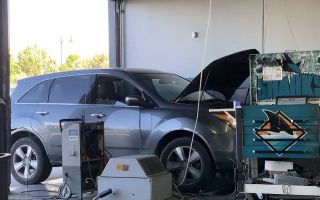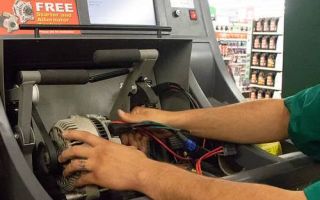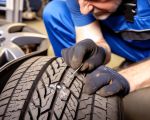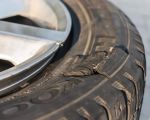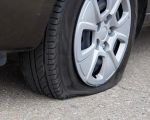How to Fix a Flat Tire on a Truck: A Step-by-Step Guide for Drivers
Dealing with a flat tire on a truck can be a stressful experience, especially if it happens in the middle of a long-haul drive or in an isolated area. I remember the first time I had a flat on my truck—it was late at night, miles away from the nearest service station, and I had no choice but to fix it myself. If you ever find yourself in this situation, knowing how to change a truck tire safely and efficiently can save you a lot of trouble. Here’s everything I’ve learned about handling a flat tire on a truck.
1. Identifying the Problem
1.1 Recognizing the Signs of a Flat Tire
Before you can fix a flat, you need to know you have one. I’ve had times when I didn’t immediately notice the problem until my truck started pulling to one side or my steering felt unusually heavy. Here are some common signs that indicate a flat tire:
- A sudden drop in speed and vehicle performance
- A thumping or flapping sound
- Difficulty steering or maintaining control
- A noticeable tilt on one side of the truck
- A tire pressure warning light on the dashboard
1.2 Finding a Safe Spot to Stop
When I realized my tire was flat, the first thing I did was find a safe place to pull over. Stopping on the highway is dangerous, so if possible, move to a rest area, truck stop, or wide shoulder away from traffic. Always turn on your hazard lights and set up safety triangles or cones if you have them.
2. Gathering the Necessary Tools
2.1 Essential Equipment for Changing a Truck Tire
Before attempting to change a flat tire, make sure you have the right tools. Over time, I’ve learned that keeping a well-stocked emergency kit in my truck is essential. Here’s what you need:
- Truck jack (rated for your truck’s weight)
- Lug wrench (impact wrench recommended for heavy-duty trucks)
- Spare tire (properly inflated)
- Wheel wedges or chocks
- Reflective safety vest
- Gloves and a flashlight (if changing the tire at night)
3. Step-by-Step Guide to Fixing a Flat Tire
3.1 Securing the Truck
Before lifting the truck, I always make sure it’s parked on a stable, level surface. Engage the parking brake and place wheel chocks around the opposite tires to prevent any movement.

MR. TIRE INC.
2078 New York Ave, Huntington Station, NY 11746, USA
3.2 Loosening the Lug Nuts
Using the lug wrench, I loosen the lug nuts slightly before lifting the truck with the jack. This makes it easier to remove them once the truck is elevated.

MR. TIRE INC.
2078 New York Ave, Huntington Station, NY 11746, USA
3.3 Jacking Up the Truck
Position the jack under the truck’s designated lifting point, usually located near the frame. I always check my owner’s manual to ensure I’m placing the jack in the correct spot. Once positioned, I slowly raise the truck until the flat tire is off the ground.
3.4 Removing the Damaged Tire
With the truck lifted, I fully remove the loosened lug nuts and carefully take off the flat tire. If the tire is stuck, a firm tap on the side can help loosen it.
3.5 Installing the Spare Tire
Align the spare tire with the wheel bolts and slide it onto the hub. Then, I hand-tighten the lug nuts as much as possible before lowering the truck.
3.6 Tightening the Lug Nuts
After lowering the truck so that the tire touches the ground but is not bearing full weight, I use the lug wrench to tighten the nuts in a crisscross pattern. This ensures even distribution and a secure fit.
4. What to Do If You Don’t Have a Spare Tire
4.1 Using a Tire Repair Kit
In some cases, I’ve had to rely on a tire repair kit, especially for small punctures. These kits usually include a plug or sealant that temporarily fixes minor leaks.
4.2 Calling for Roadside Assistance
If I don’t have a spare or the damage is too severe, I contact a towing service or roadside assistance. Many companies offer mobile tire repair services, which can save time and effort.
5. Preventing Future Flat Tires
5.1 Regular Tire Inspections
After experiencing a few flats, I now make it a habit to check my tires regularly. Looking for visible damage, proper tread depth, and correct tire pressure can prevent unexpected blowouts.
5.2 Carrying an Extra Spare
If you drive a truck frequently, carrying an additional spare tire can be a lifesaver. I keep an extra in my truck bed to avoid being stranded again.
5.3 Avoiding Road Hazards
Debris, potholes, and sharp objects on the road are common causes of flat tires. Staying alert and avoiding these hazards can reduce the risk of tire damage.
6. The Role of Towing and Roadside Assistance
6.1 When to Call a Tow Truck
Not all flats can be fixed on the spot. If the tire is severely damaged, you may need a tow to the nearest service station. Knowing a reliable tow truck company can be a lifesaver in these situations.
6.2 Benefits of Roadside Assistance Memberships
After one particularly bad experience, I signed up for a roadside assistance plan. Many programs offer tire change services, fuel delivery, and towing, making them a great investment for frequent drivers.
6.3 Choosing the Right Service Provider
When selecting a towing company, I look for fast response times, affordable pricing, and 24/7 availability. Reading reviews and asking fellow truck drivers for recommendations has helped me find trustworthy providers.
7. Final Thoughts on Handling a Flat Tire
- Always carry a properly inflated spare tire and the necessary tools.
- Learn how to safely change a tire before you actually need to.
- Check your tires regularly to avoid unexpected flats.
- Consider a roadside assistance plan for added peace of mind.
Fixing a flat tire on a truck may seem daunting at first, but with the right preparation and knowledge, it becomes a manageable task. Whether you change the tire yourself or call for assistance, staying safe and making informed decisions is the key to getting back on the road quickly.




